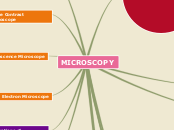Organisms in a nutshell (sorta) (AKA what happened when I learned memes don't work well with this unit)
Have One singular cell
The single cell functions
to keep the entire organism alive
Reproduce asexually, by basically just dividing/cloning themselves ( which is 100x cooler than what multicellular organisms do)
Found in almost every habitat (even hot springs)
Most Unicellular organisms are either bacteria or protists
using cilia and flagella. By creating currents in the surrounding environment, cilia and flagella can move the cell in one direction or another.
Unicellular
Organisms
Paramecium
paramecium aurelia
vacuoles take in food from the water and turn it into nutrients
unicellular ciliates
Amoeba
The term "yeast" is often taken as a synonym for Saccharomyces cerevisiae (basically it's that but some random scientist wanted to make it interesting)
They get their nutrients through a process called phagocytosis where it engulfs the food that it plans to get nutrients from (they don't have an organelle for nutrition)
Protozoa (Protista)
Yeast
lomosa amoebida
Yeasts feed on sugars and starches, which are abundant in bread dough
Fungi
Fun facts :D
Scientists managed to duplicate DNA billions of times using TAQ Polymerase, which is an enzyme found in thermus aquaticus, which was found in a boiling yellowstone hot spring.
I included yeast as unicellular since most of them are, however many yeasts are known to switch between unicellular and multicellular lifestyles depending on environmental factors, so they're usually as facultatively multicellular
Slime molds are a very unique type of unicellular organisms. Although they are unicellular, they swim together and form a giant cell like structure. They helped scientists study cell interactions, since they’re so large
While it took one billion years for the first unicellular organism to appear, it took another 2 billion for the first multicellular organism to appear
References:
https://biologydictionary.net/unicellular/
https://www.nationalgeographic.org/encyclopedia/unicellular-vs-multicellular/
https://www.newworldencyclopedia.org/entry/Paramecium https://pubmed.ncbi.nlm.nih.gov/7747515/
https://biologydictionary.net/multicellular/
https://www.kenhub.com/en/library/anatomy/types-of-cells-in-the-human-body
https://www.vedantu.com/biology/nutrition-in-amoeba
Have Multiple Cells
Every cell has different functions
to keep the organism alive
Animals reproduce Sexually (I know you know how), plants reproduce sexually by pollination, and fungi combine by fusing their hyphae together into an interconnected network called anastomosis to reproduce sexually
while you can find them in a lot of places, you can't find them in very high/low temperature areas a lot
All species of animals, land plants and most fungi are multicellular
Multicellular
Organisms
Goldfish
they eat all matter of vegetation, insects and their larvae, small crustaceans, zoo-plankton and even dead and decaying plant and animal matter.
Goldfish have four kinds of cone cells, which are respectively sensitive to different colors: red, green, blue and ultraviolet
Carassius auratus
Human
We eat pretty much every non poisonous thing that tastes good (you should know this)
(Probably best not to mention this)
Humans have Basophils, which are the rarest form of white blood cell and are involved in the body's defense against parasites
Homo sapiens
German Sheperd
They're a breed of dog meant to be a pet, so they're usually fed human food such as beef, pork, and tuna
Commonly kept as pets
A dog has different amounts of ganglion cells in their retina depending on their breed. For example the German Sheperd's values vary from 5300-13,000 cells/mm2 in the central area, with the cells densely packed, to 1000 cells/mm2 or less in the periphery, where the cells are sparsely distributed (MM2 = square millimeter)
Canis lupus familiaris
Animal









